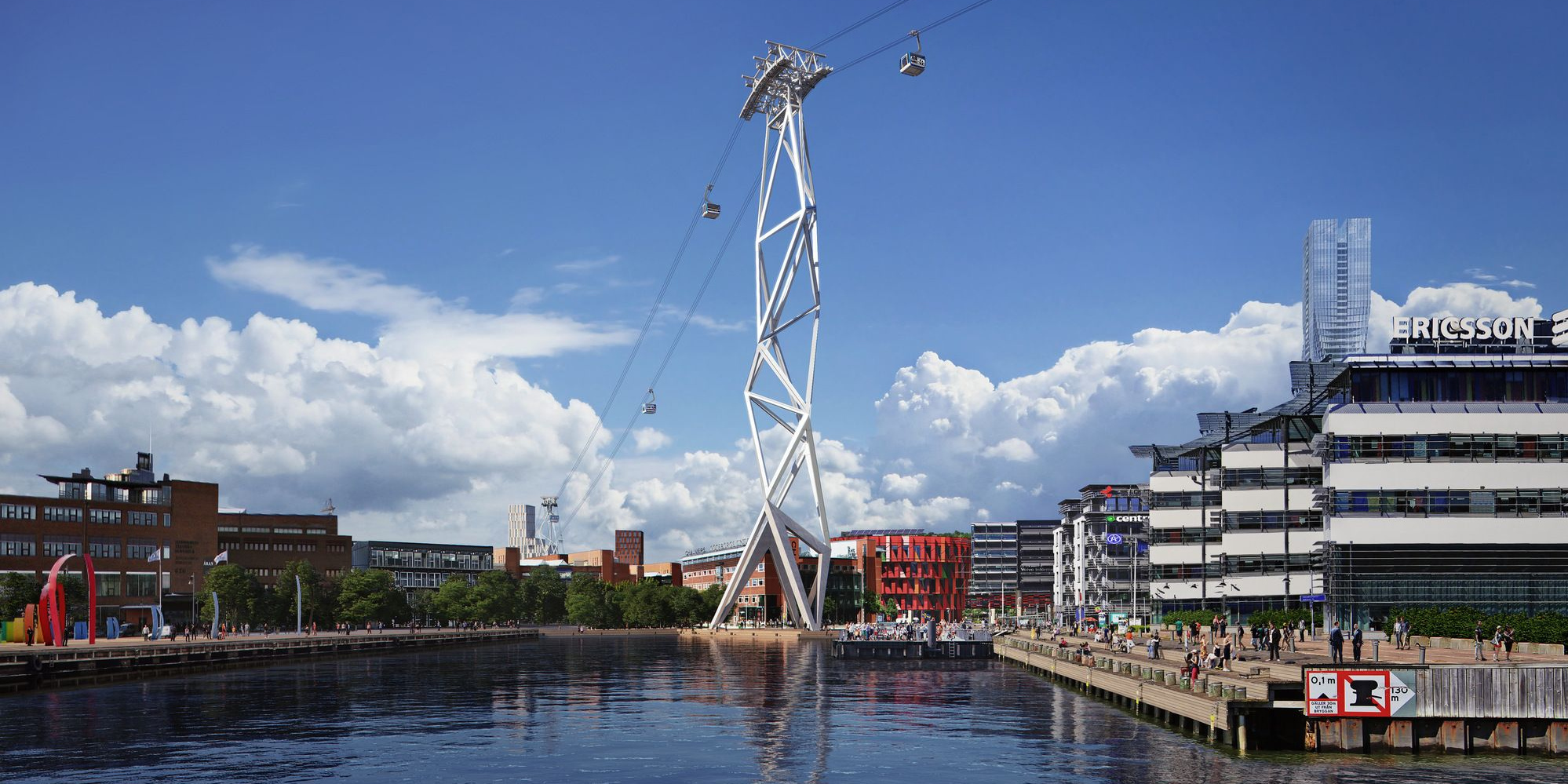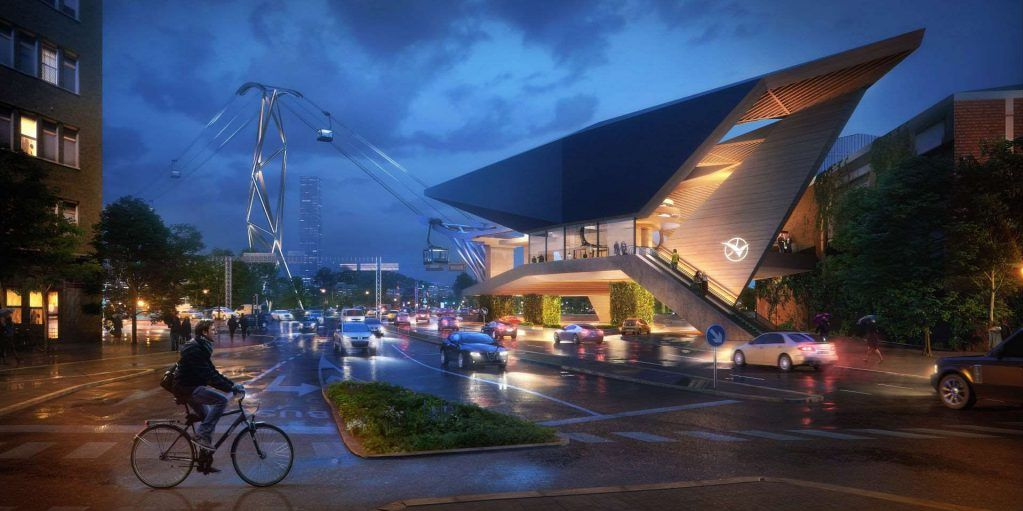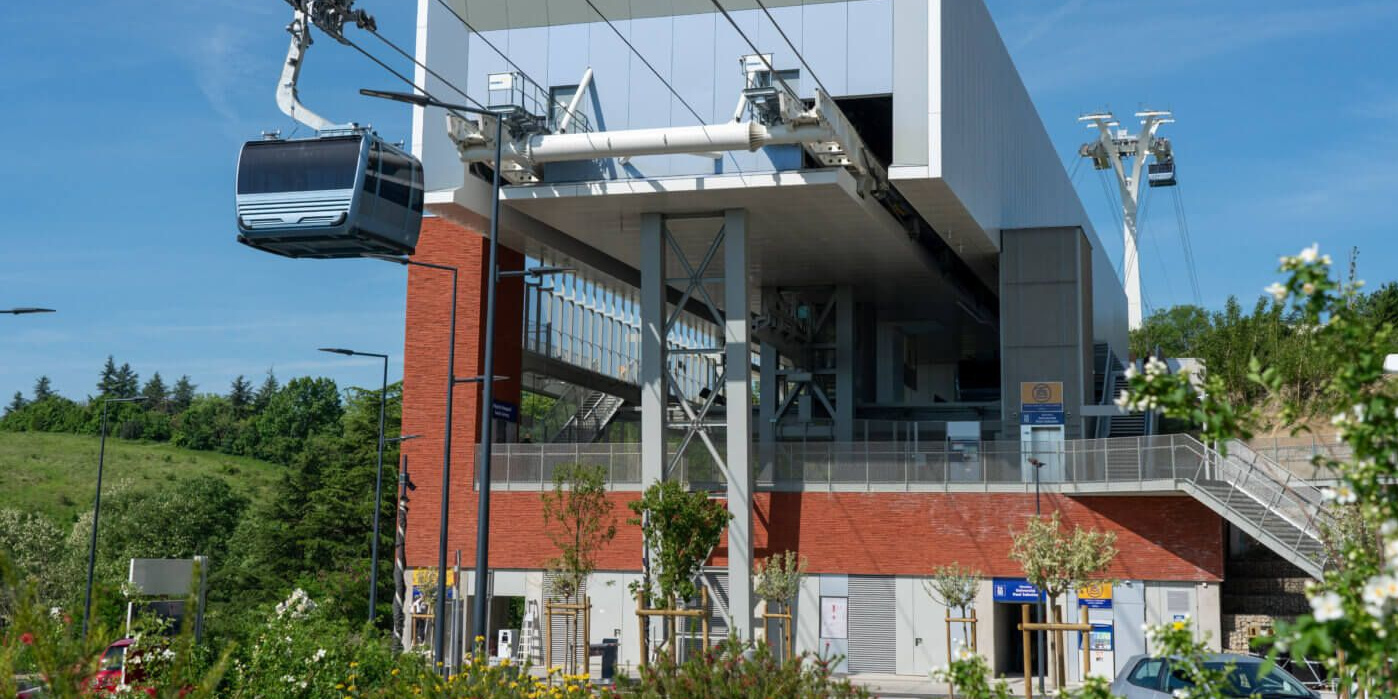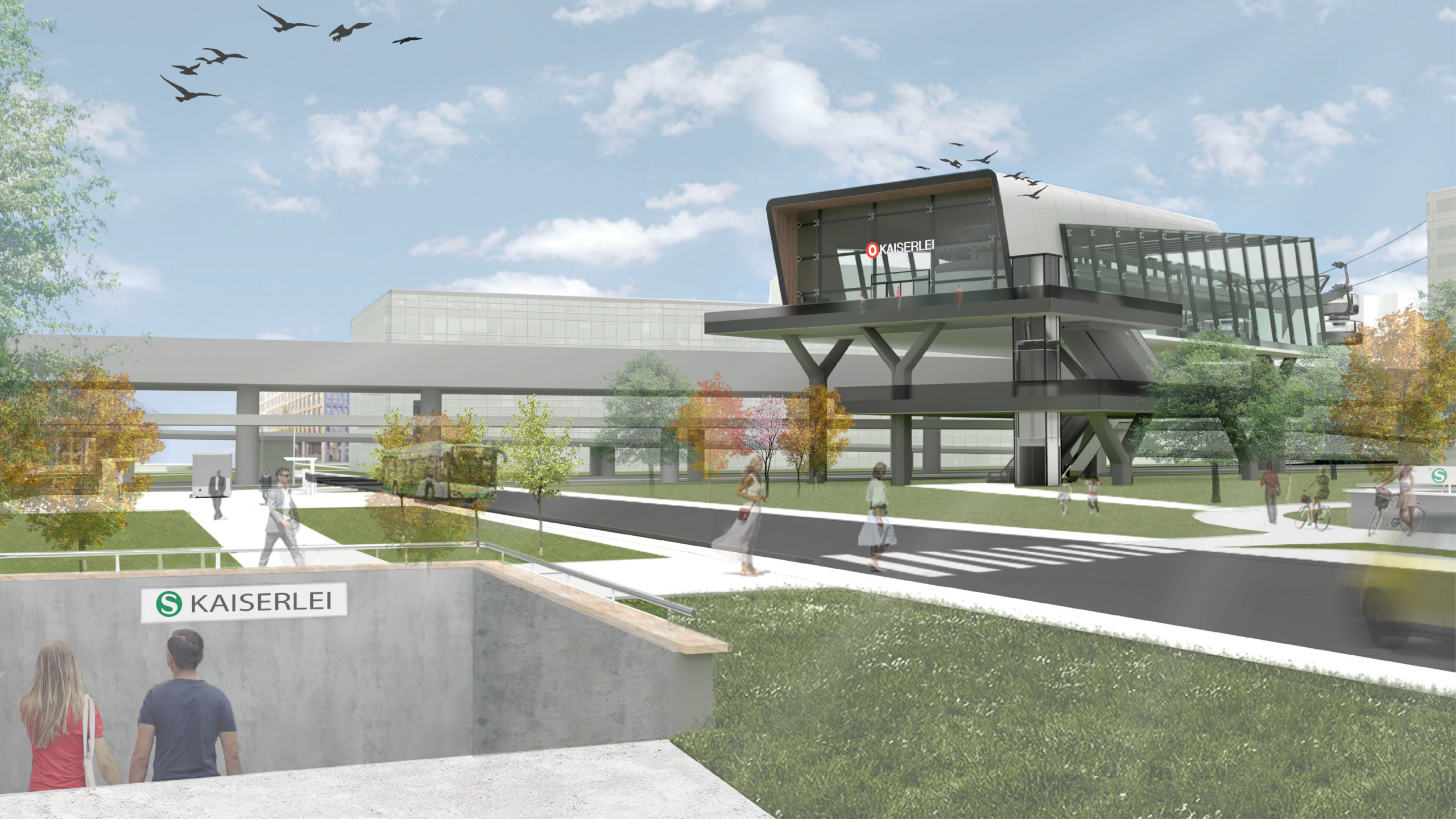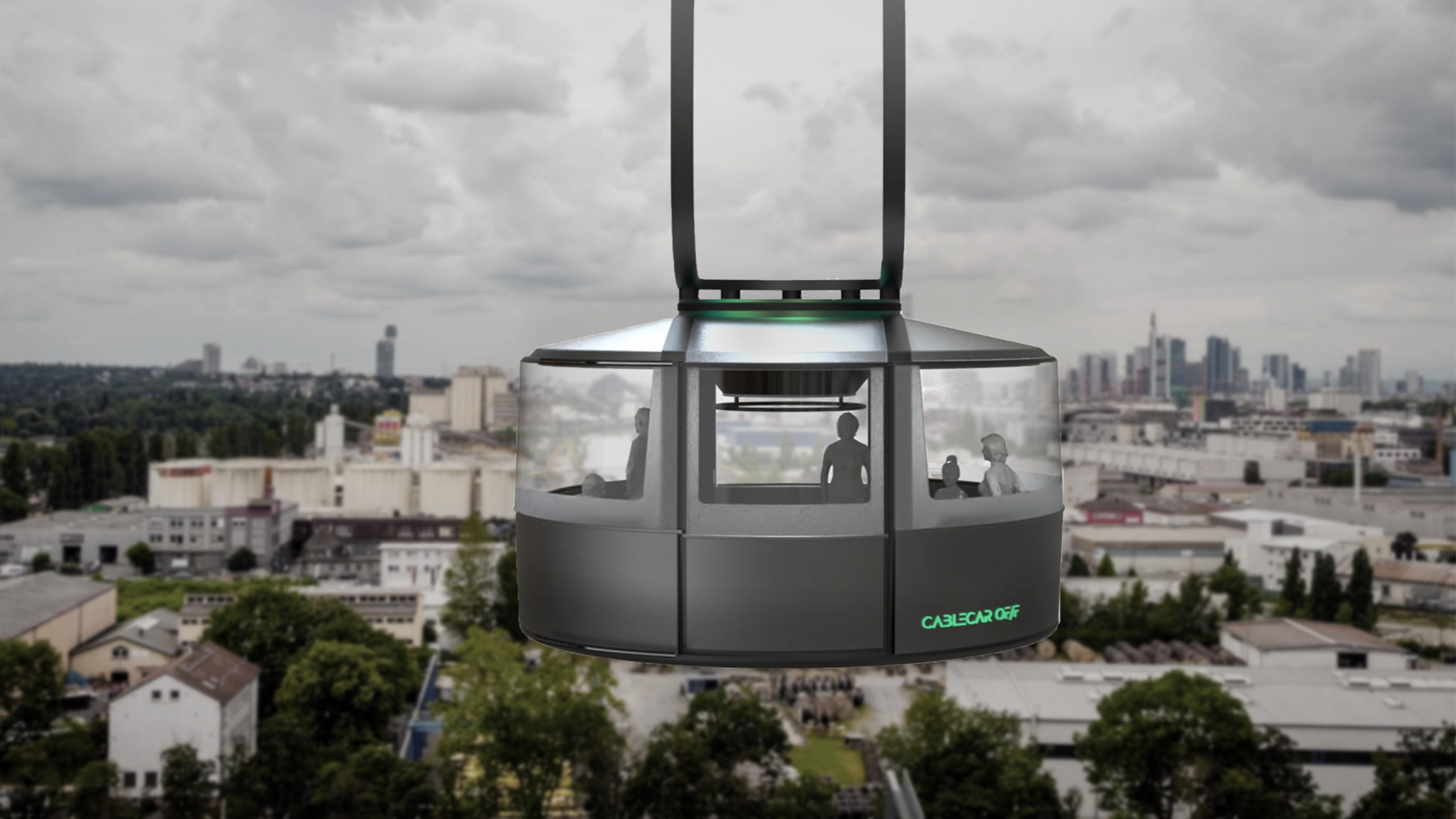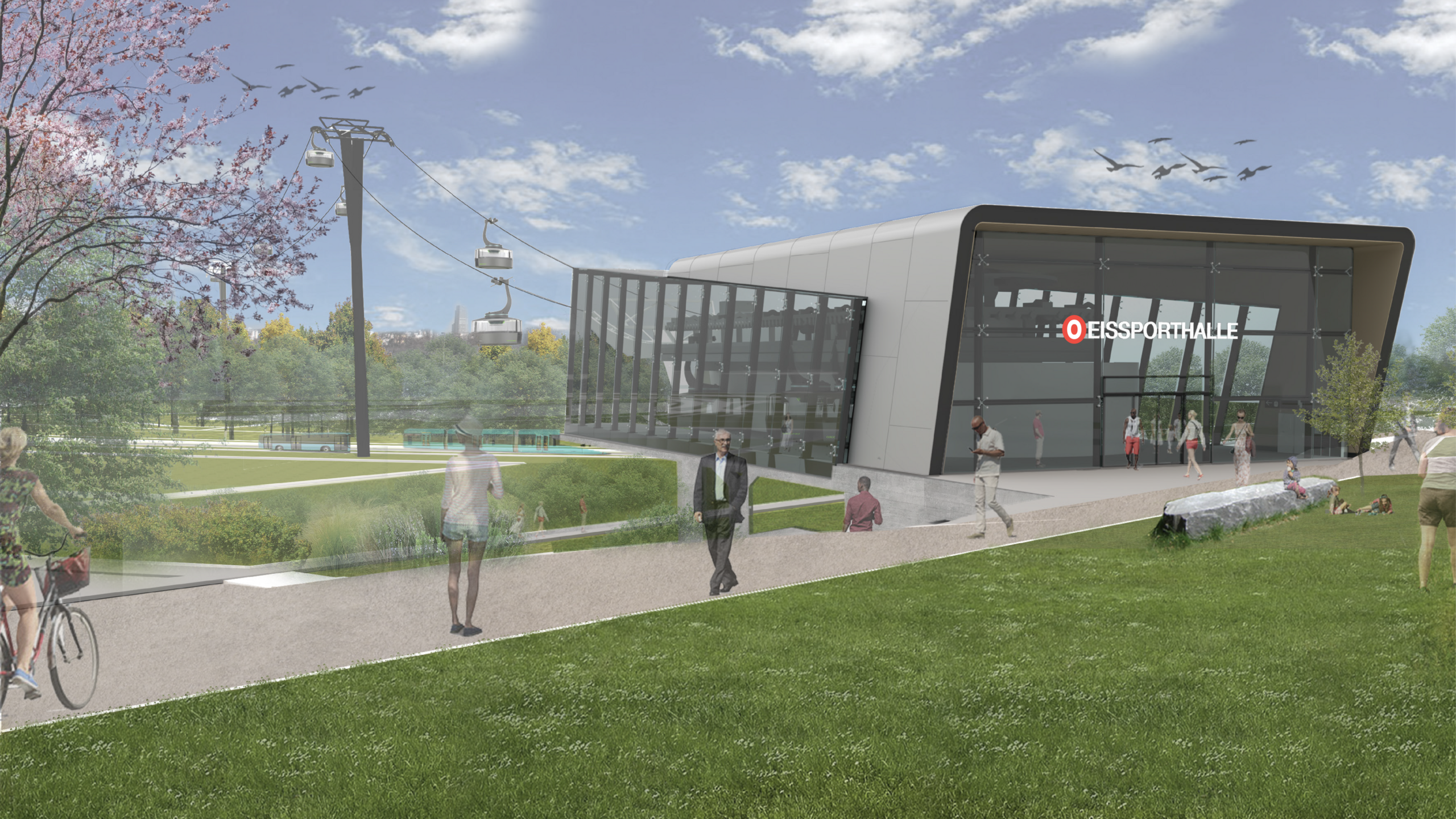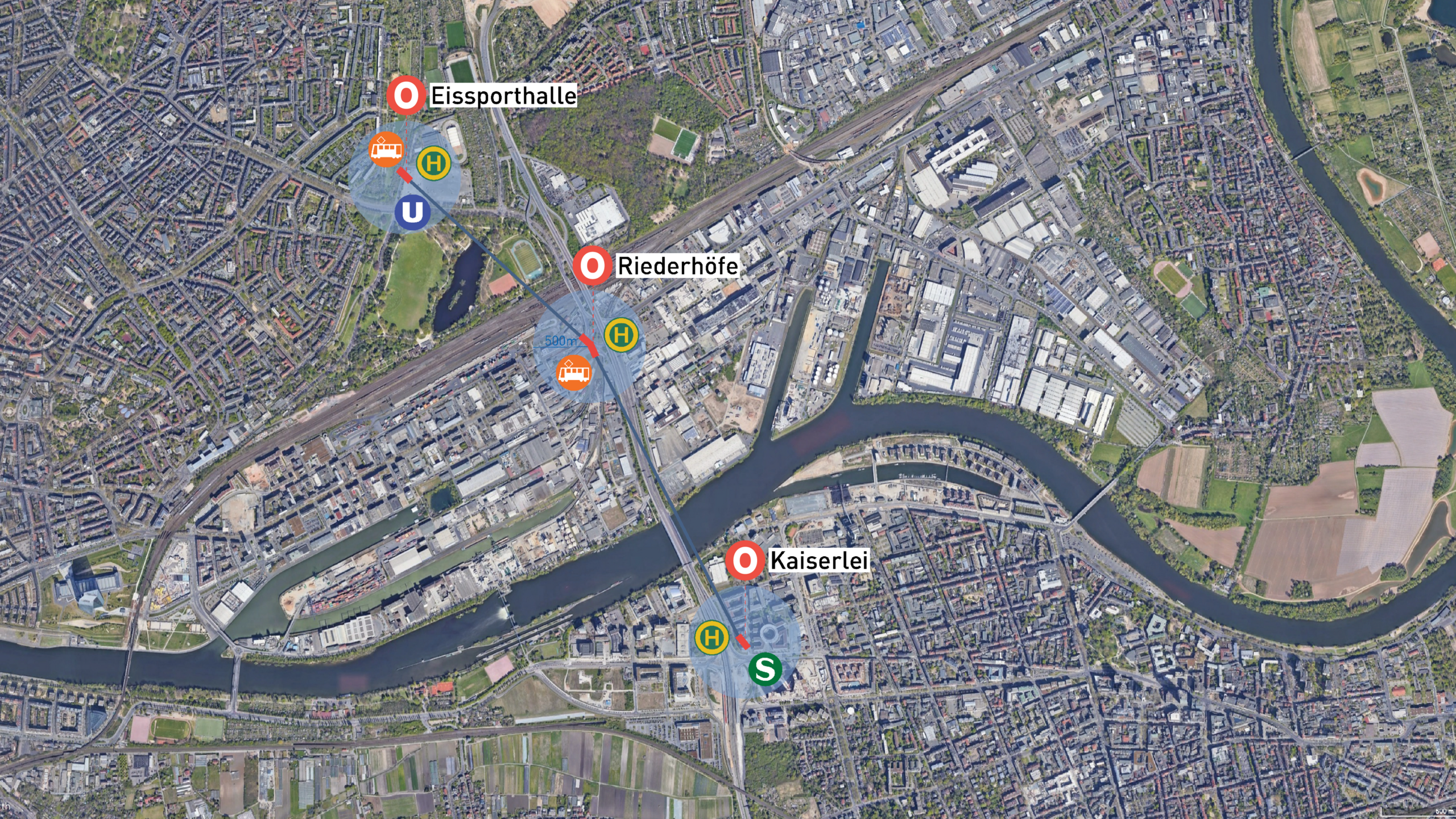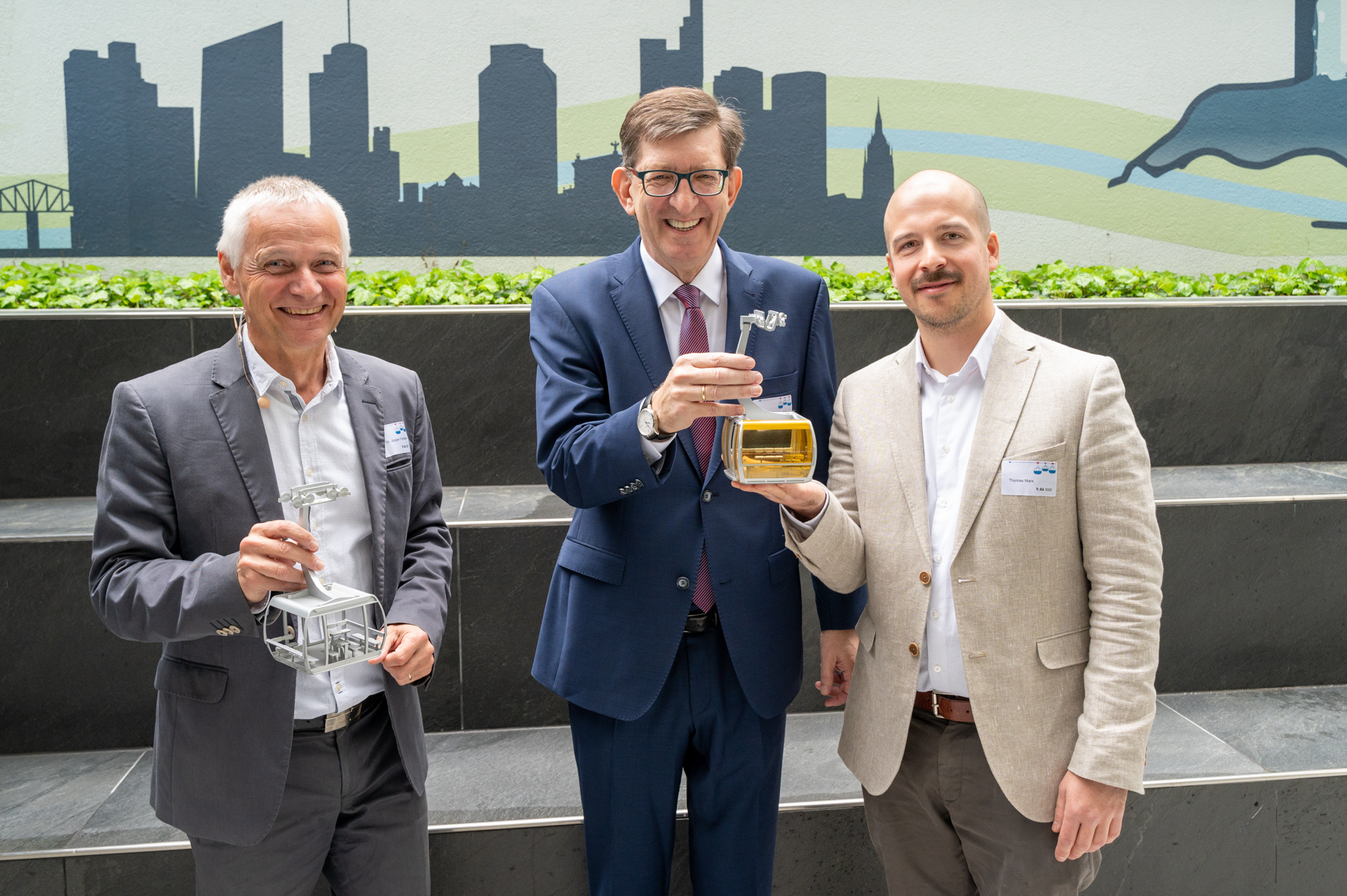Stuck in traffic or up and away
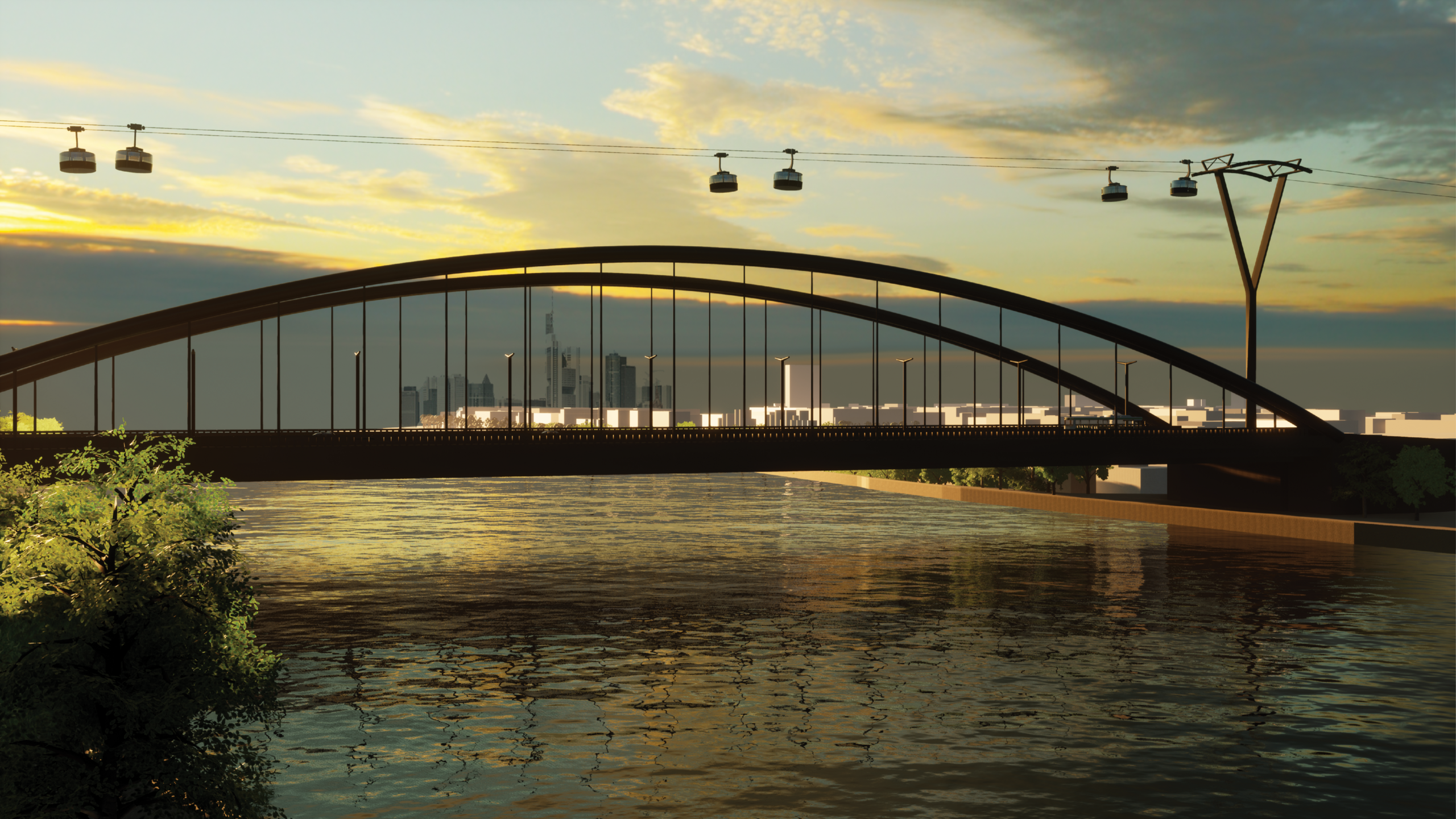
Schweben statt im Stau stehen
Cities such as London, Toulouse and soon Paris operate cable cars as a means of urban transport, and in cities such as Amsterdam and Bonn corresponding plans are underway. Professor Jürgen Follmann, transport expert at h_da, and his team led by civil engineer Thomas Marx have been pressing for the use of cable cars in the Rhine-Main region as well – currently for a route from Kaiserlei, a suburb of Offenbach, to the skating rink in Frankfurt. This important topic for the future of transport is also the subject of one of the first courses in the new inter- and transdisciplinary Study Area “Mobility” at h_da.
By Astrid Ludwig, 20.9.2023
When Jürgen Follmann, Professor of Civil Engineering, Mobility Officer and transport expert at Darmstadt University of Applied Sciences, puts his mind to something, it is difficult to stop him. That there is now a cycleway 30 kilometres long which will soon run from Frankfurt via Langen to Darmstadt is largely thanks to his dedication and tenacity. For years, he has devoted himself with similar commitment to another means of transport – the cable car. In his opinion, cable cars should not only chauffeur passengers to tourist destinations but also be used as an innovative means of transport in everyday urban traffic. “Cable cars are indispensable – perhaps even as an interim solution – for closing gaps in the public transport network in conurbations in the future.”
Several routes already planned
For Follmann, the advantages are obvious: cable cars are climate-friendly and generate hardly any noise or pollutants, land use is minimal, and they are faster and more cost-effective to build than, for example, new tram or underground railway lines. They can transport up to 5,000 people per hour and direction in the cabins, which float along every 25 seconds and travel at up to 25 km/h. For comparison: the average speed of buses and trains in urban conurbations is around 18 km/h. There is also space for bicycles, wheelchairs and prams. Delays? Not at all! In addition, Follmann considers cable cars to be safe and reliable.
Together with students, Professor Follmann and Thomas Marx have been looking at plans for possible routes in the Rhine-Main region and in this context successfully established contacts to regional and local politicians, the business community, neighbouring cities such as Frankfurt and Offenbach, transport companies, the Regional Authority FrankfurtRheinMain and the Chamber of Commerce and Industry. In 2019, the joint initiative with the Regional Authority FrankfurtRheinMain led to the 1st Cable Car Day for the region, and the second took place in May 2023.
Against the background of the UEFA EURO 2024 football tournament, a route from Frankfurt Airport via Neu-Isenburg to the “Deutsche Bank Park” stadium (formerly “Waldstadion”) and the Louisa tram station in Frankfurt seemed for some time to have the best prospects. “But then the coronavirus pandemic came along,” laments Follmann. The time schedule is now too tight to complete the project by 2024. That is why another route was recently presented at the 2nd Cable Car Day, which has already been included in the City of Frankfurt’s Local Transport Plan 2025+: from Kaiserlei, a suburb of Offenbach, via Frankfurt’s Riederhöfe (former homesteads) to its skating rink. There is even already a model. Together with students and designers from Hochschule für Gestaltung (HfG) Offenbach, Hesse’s State University of Art and Design, the “High¯Line” was designed and the route from Offenbach to Frankfurt further developed. The High¯Line met with a tremendous response both at the 2nd Cable Car Day and the 24th HfG Tour.
Cable cars are a highlight in urban districts
The route, according to Follmann, “would close a real gap in local public transport”. And give the Kaiserlei district, which has lain rather dormant until now, a positive boost in terms of urban development. A study conducted by “BPD, Bouwfonds Immobilienentwicklung”, one of the largest project and area developers in Europe, has shown that cable cars can constitute an innovative mobility solution for sustainable urban and regional development. The team led by Follmann and Marx as well as UNStudio, a renowned architecture firm from Amsterdam, worked together on the study, according to which cable cars can not only link many different types of transport as a kind of mobility hub. Their stations are at the same time “a place with high added value for a whole urban district” because they can accommodate various uses such as restaurants, retail, sports, social and cultural facilities.
It appears that the Federal Ministry for Digital and Transport is of the same opinion. In 2022, it issued guidelines for local authorities as well as transport operators and associations to support the integration of cable cars into urban mobility. “The Federal Government wants to give financial support to pilot projects in Germany that supplement local public transport,” reports Professor Follmann. Among other things, plans are underway in Bonn, Cologne, Munich and Stuttgart. “In any case, passengers love this means of transport,” he says. His team is involved in building the cable car for Germany’s National Garden Show in Mannheim. In fact, the cable car was supposed to be temporary, but now the urban community has expressed the wish for it to be operated permanently. France’s longest urban cable car, the Téléo, went into operation in Toulouse in May 2022. The route, which is three kilometres long, was initially planned for 6,000 passengers per day, “today it transports up to 20,000,” says Follmann. He is convinced that the “High¯Line” between Offenbach and Frankfurt would be a big hit, as a tourist attraction as well, because of “the view of the skyline alone”.
The fact that Frankfurt and the Rhine-Main region will bear the title “World Design Capital” in 2026 – after Valencia, San Diego and Tijuana – is likely to accelerate the idea. Every two years since 2008, cities or regions have been commended for the way they use design in economic, social, cultural and ecological development. “Our region’s application also includes the idea of a cable car between Offenbach and Frankfurt,” Follmann is pleased to say, and he is confident that “something can now come out of the project.” Meetings with the Regional Authority FrankfurtRheinMain, traffiQ (Frankfurt’s local public transport company) and the chambers of commerce and industry in Frankfurt and Offenbach, among other stakeholders, are already on the agenda. Perhaps cabins will soon indeed be travelling at lofty heights between Kaiserlei and the skating rink. However, one problem might arise: the route runs close to allotments and Frankfurt’s Ostpark, the city’s second largest park, which could trigger complaints. But there are technical solutions for that. “It is possible to restrict the view from the cabins in certain places,” says Follmann.
Topic of the first courses in the new Study Area
Students who have registered for the new Study Area “Mobility” in the winter semester will be able to plan their own cable car route. The Study Areas will start in the 2023/24 winter semester and are part of h_da’s Strategic Concept, which was developed two years ago with the broad participation of university members. It identified three megatopics for which three inter- and transdisciplinary Study Areas have now been established: Mobility, Sustainable Development, and Digitisation and Society. The Study Areas bundle expertise in these topics and courses that students from all faculties can attend. “There is arguably no other university that offers something like this,” highlights Follmann.
The professor co-developed the Study Area “Mobility” after students asked him again and again during visits to their schools where they could study “Mobility”, whereby their ideas about the contents of such a study programme greatly varied. He is sure: “Today, when young people choose their study programme, we have to attract them via the topics they find interesting.” In view of the around 70 study programmes at h_da, young people are often overwhelmed, he says, and unable to find the subject that interests them. The Study Areas should make that easier. For “Mobility”, for example, STEM subjects, social sciences, media and design are integrated, which introduce quite different aspects: drive technologies and plastics in mechanical engineering, mobility issues of an ageing society, accessibility in architecture and urban planning, route planning in computer science, logistics or planning, construction and operation of traffic installations. “We offer generalised basic training in all these areas of expertise,” says Follmann. In the first three semesters, students can get to grips with the many facets of mobility and then decide on a study programme that goes into it in greater depth.
For the initial phase, Professor Follmann, together with Sofia Trunov and Thomas Marx, has designed a course that will illustrate – in 14 classes – how the different disciplines interlink. Follmann hopes “that interdisciplinary discussions and perhaps completely new ideas will result from the students’ different perspectives on mobility”. The students’ task is to plan a cable car project from Dieburg to Darmstadt. This will involve technical and planning issues, construction elements from civil engineering, mathematics fundamentals, logistical aspects of freight transport as well as the basic principles of a business plan because the construction and operation of a cable car generally have to be financed from public funds. At the end, Follmann emphasises, the young students must be able to present their plans in a suitable way in the shape of a presentation in front of a large audience with representatives from HEAGmobilo, local authorities along the cable car route, RMV (Rhine/Main Regional Transport Association) and Dadina, a local transport company. “This will also send a clear message to the region,” he hopes. Perhaps with the help of the new Study Areas and the students, a cable car solution will also become an attractive option for Darmstadt.
Contact
Christina Janssen
Science Editor
University Communication
Tel.: +49.6151.533-60112
Email: christina.janssen@h-da.da
Translation: Sharon Oranski
